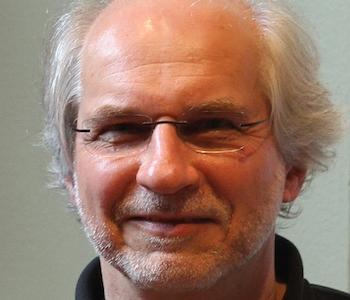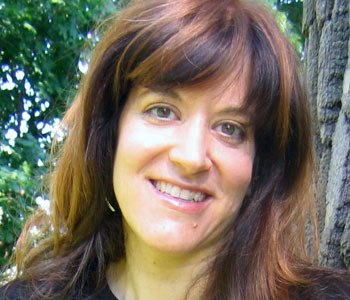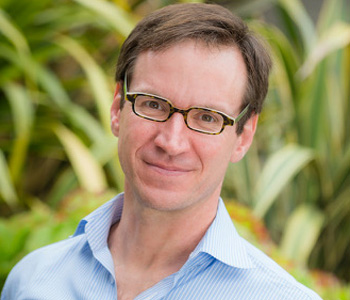Mary Ryan
Mysteries of Sex: Tracing Women and Men Through American History
University of North Carolina Press
448 pages, 6 1/8 x 9 1/4 inches
ISBN 978 0807859452
Mysteries of Sex invites the reader to suspend the belief that men are men and women are women and explore two intertwined phenomena. The book asks first of all just how the dividing line between male and female is drawn—and repeatedly redrawn—over the course of history. That is the “mystery of sex.” Secondly, and as noted in the subtitle, the book explores the historical consequences of making distinctions between things male and female.
The pursuit of these questions takes the reader over some five hundred years of American History, from the sixteenth century to the twenty-first. Each of the book’s seven chapters poses another mystery, set in another moment in time. The story begins when Europeans and American Indians first encountered one another, producing mutual bewilderment about alien ways of practicing manhood and womanhood. It concludes late in the twentieth century when another wave of immigration into North America once again dispelled belief that there was one cross-cultural, transnational meaning of male and female.
Accounting for the variety and the malleability of sexual differentiation is both an intriguing intellectual exercise and a critical political and humanistic project. To acknowledge the variety, mutability and recurring mystery of sex is to challenge the inequity and misunderstanding that have too long plagued the relations of men and women.

The millions of immigrants who converged on these shores from all around the world raised a dizzying array of different gender possibilities, lending both mystery and hope to the future of gender in America.
I wrote my first book, Womanhood in America, almost 40 years ago. It was an audacious enterprise, an attempt to write the history of half the population at a time when no more than a handful of monographs on the subject were in print. Since then scholarship about women’s past has exploded in volume, spun off into related specialties like the History of Sexuality and Studies of Masculinity, and been re-framed as Gender History.
At the simplest level, it would seem that a revised editions of that original jejune book was in order. After decades of struggling to keep my classes on Women’s History up to date, my lecture notes had become something of a mess. At the very least I needed to take the time to incorporate mounds of newly discovered facts into a coherent, remodeled historical narrative.
This did not prove to be a simple task. Certainly it would be possible to condense mounds of monographs and articles, on every possible historical event, period and demographic group, into a textbook. But I was not the patient and meticulous scholar to perform that task. Theoretical advances in the field suggested another obvious strategy, to transform Womanhood in America into “Gender in America” by adding men and reciting the new orthodoxy that women and men were culturally constructed categories not extensions of biology. But that seemed too pat, like closing down prematurely on all the historical puzzles that remained. Accounting for the inequities, conflicts and unrealized possibilities of pleasure that have separated men and women called for more historical imagination.
It was in this context that Mysteries of Sex slowly took shape. Up until the minute before the book went into print, I hesitated about the title. I was fearful that “mysteries” might mislead prospective readers into expecting a titillating story. Those provocative words remain on the cover to the book for two reasons. First writing “sex” rather than “gender” expresses my belief that the distinctions all societies draw between male and female are not just any order of social or cultural category. Their meaning and power accrue from their association with fundamental matters of the body, sexuality, desire and procreation.
The second term in the title, “mystery,” is meant to rob sex of any illusion of rigid and absolute dualism. For all its historical force and persistence, the practice of differentiating things male from things female is a testimony to the endless and mystifying inventiveness of human cultures.
Mysteries of Sex offers readers some practical guidelines through this maze of historical possibilities. It tracks sex through history by identifying three axes of gender differentiation that I term asymmetry, the relations of the sexes and hierarchy, that is how sex divides, or, in other words, the ways that Americans have divided, related and ranked men and women.
The book’s table of contents offers readers seven mysteries to choose from. Each purports attempt to solve a major historical quandary.
“Where Have the Corn Mothers Gone” asks why, after at least two centuries of struggle, a European gender culture triumphed over Indian ways of defining male and female. The next chapter turns to New England family history, and travels from the colonial period to the Victorian age looking for an answer to “Who Baked the Apple Pie,” or how did American middle class culture come to venerate domestic femininity so highly.
Chapter Three addresses the troubled relationship between race and gender. Situated in the American South, the chapter investigates the critical role gender and sexuality played in the institutionalization of slavery, the coming of the Civil War and the failure of Reconstruction. The next chapter focuses on nineteenth century politics. It examines how the American political tradition was built upon a treacherous gender divide and discovers how women were able to achieve political power, even when they were denied the vote and public office.
The last three chapters take the story into the twentieth century looking for clues that will explain a remarkable alteration of the meanings of male and female. This investigation proceeds through the collective biographies of several generations, starting with those “new women” who conquered the paid labor forces and streamlined their domestic roles during the first decades of the last century and moving on to their daughters and granddaughters who, in their everyday life as well as collective action, undermined the divide between male and female, home and work that had endured more than a century.
In the last chapter, I review the twentieth century transformation of gender through the lens of immigration, as seen in two waves, one before 1920 and the second after 1965. The millions of immigrants who converged on these shores from all around the world raised a dizzying array of different gender possibilities, lending both mystery and hope to the future of gender in America.
The volatility and possibility of recent gender history makes Chapter Seven especially interesting to general readers. “Where Does Sex Divide: Feminism, Sexuality and the Structures of Gender since 1960” starts with the familiar history of second wave feminism, and casts it as a story of two generations, represented by the matrons of National Organization of Women and the young radicals of the Women’s Liberation Movement. But the gender revolution had more depth and mystery than this. It grew out of changes in the basic structure of gender as enacted by millions of women and men: like the transformation of the labor force underway for several generations, alterations in the family cycle that offered women larger spans of time without children to care for, and the increasing cohabitation of the sexes in schools, workplaces, and sexual intimacy. These forces came together with explosive consequences late in the 1960s. By 1980 the age-old divide between the sexes that ordained man the breadwinner and women the housewife, had crumbled.
This chapter, like the other six, presents historical change in the actions of individuals. The story of the late twentieth century is powerfully illustrated by Pauli Murray who made history as lawyer for the NAACP and women’s causes. Born in 1910 she was first denied admission to the University North Carolina because of her race, then barred from admission to Harvard Law School because of her sex, and at Howard University’s law school encountered what she called “the prejudice of sex.” Only with the second wave of feminism, to which she had contributed her legal sagacity, did Pauli Murray achieve her personal American dream. In her seventies she rose in the pulpit of the very church where her ancestors once sat as slaves, the first African American women to be ordained an Episcopalian minister.

With the eclipse of feminism, moreover, gender seldom gets much public attention.
At the dawn of the twenty-first century all three axes of gender had been remodeled. The roles of men and women had become distinctly more symmetrical, the imperative of heterosexual relations been men and women had been substantially relaxed thanks to the gay liberation movement, and the dominance of men had been significantly reduced, be it measured in average wages, or numbers of high ranking women among public officials.
Yet the injustices, inequities and human cost that fester along those stubborn but flexible dividing lines between male and female have not disappeared. With the eclipse of feminism, moreover, gender seldom gets much public attention. Relative indifference to gender has also returned to the historical profession, still comfortable in its old haunts, the past lives of presidents, warriors, and other elite white males. This book is meant as a summons to citizens and historians to remain vigilant about the continuing mysteries of sex.




We don't put paywalls. We don't distract you with ads. We don't sell your data.
Please help to keep this running!